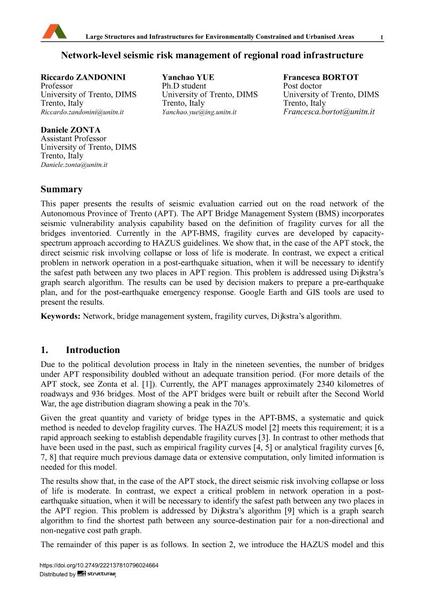Network-level seismic risk management of regional road infrastructure

|
|
|||||||||||
Détails bibliographiques
| Auteur(s): |
Riccardo Zandonini
Yanchao Yue Francesca Bortot Daniele Zonta |
||||
|---|---|---|---|---|---|
| Médium: | papier de conférence | ||||
| Langue(s): | anglais | ||||
| Conférence: | IABSE Symposium: Large Structures and Infrastructures for Environmentally Constrained and Urbanised Areas, Venice, Italy, 22-24 September 2010 | ||||
| Publié dans: | IABSE Symposium Venice 2010 | ||||
|
|||||
| Page(s): | 296-297 | ||||
| Nombre total de pages (du PDF): | 8 | ||||
| Année: | 2010 | ||||
| DOI: | 10.2749/222137810796024664 | ||||
| Abstrait: |
This paper presents the results of seismic evaluation carried out on the road network of the Autonomous Province of Trento (APT). The APT Bridge Management System (BMS) incorporates seismic vulnerability analysis capability based on the definition of fragility curves for all the bridges inventoried. Currently in the APT-BMS, fragility curves are developed by capacity- spectrum approach according to HAZUS guidelines. We show that, in the case of the APT stock, the direct seismic risk involving collapse or loss of life is moderate. In contrast, we expect a critical problem in network operation in a post-earthquake situation, when it will be necessary to identify the safest path between any two places in APT region. This problem is addressed using Dijkstra’s graph search algorithm. The results can be used by decision makers to prepare a pre-earthquake plan, and for the post-earthquake emergency response. Google Earth and GIS tools are used to present the results. |
||||
